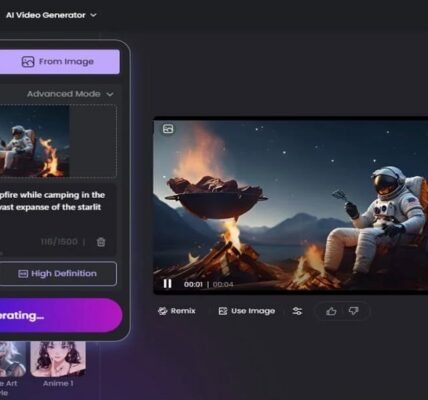Remote technical writing continues to progress as one of the most versatile and popular professions in 2025. As businesses increasingly work online and accept remote-first models, the need for skilled writers who can simplify complex information into user-friendly documentation has never been stronger. Let’s explore remote technical writing in-depth, from market trends to earning potential, skills in demand, and how to break into remote technical writing opportunities successfully.
What is remote technical writing?
Remote technical writing is the practice of creating technical documents, such as user manuals, software guides, product documentation, and standard operating procedures, while working from a remote location. Rather than being restricted to a traditional office setting, remote technical writers collaborate with engineering, product, and marketing teams through digital tools to produce clear, accurate, and user-friendly documentation.
In the digital-first world of 2025, remote technical writing has become an essential role across industries like software development, healthcare, manufacturing, and finance, offering professionals the adaptability to work from anywhere while supporting global teams. A remote technical writer performs the same function but works from a home office or any location outside of the traditional office environment. Companies are increasingly adopting remote or hybrid work models. Remote technical writing has become one of the best jobs for remote talent.
Key Features of Remote Technical Writing:
- Location Flexibility: Writers can work from anywhere with internet access, reducing come and go time and increasing work-life balance.
- Technical Communication Skills: Requires the ability to translate complex technical information into clear, readable content for various audiences (e.g., end users, developers, internal teams).
- Tool Proficiency: Familiarity with tools like Microsoft Word, Confluence, GitHub, MadCap Flare, Adobe FrameMaker, and Markdown editors is essential.
- Research and Interviewing Skills: Strong ability to gather information from subject matter experts (SMEs), existing documents, or software testing environments.
- Adaptability to Multiple Industries: Applicable across sectors like SaaS, healthcare, aerospace, cybersecurity, and fintech.
Who Hires Remote Technical Writers?
Remote technical writers are in demand across a wide range of industries. Their ability to create clear, user-focused documentation makes them valuable to any organization that needs to explain complex information in a clear, concise, and simple manner. Here are the types of companies and organizations that typically hire remote technical writers:
- Technology Companies
- Software Development Firms
- SaaS Companies
- Cybersecurity Firms
- IT & Cloud Service Providers
- Healthcare & Medical Devices
- Engineering & Manufacturing Companies
- Finance and Fintech
- Government Agencies & Defense Contractors
- E-learning and EdTech Companies
- Consulting Firms & Agencies
- Startups
- Open Source Projects & Developer Communities
Day-to-Day Tasks for Remote Technical Writing:
The daily tasks of a remote technical writer vary depending on the industry and project, but generally include a mix of research, writing, collaboration, and content management. Here’s a detailed breakdown:
1. Research & Information Gathering:
- You can interview Subject Matter Experts (SMEs), engineers, or product managers via Zoom/Slack. Gather information via studying existing technical documents, diagrams, specifications, or product prototypes.
- Attend product demos or engineering meetings to understand technical concepts. Research industry standards and regulatory requirements, if needed.
2. Planning & Outlining Documentation:
After researching and gathering information, the first thing you need to do is define document structure (e.g., headings, appendix). Then choose the suitable type of documentation: user manual, FAQ, whitepaper, installation guide, API reference, etc. You can use storyboarding or content mapping tools like Notion, Trello, or Confluence as well.
3. Writing & Editing:
Writing or updating documentation using tools. There are tons of tools available to create documentation. To write and edit good remote technical writing, we can use tools like
- Markdown or HTML for developer docs
- MS Word / Google Docs for internal docs or reports
- MadCap Flare, RoboHelp, or Paligo for structured content
- DITA XML for modular documentation
To write an effective and engaging document, you can follow a style guide (e.g., Microsoft Manual of Style, Google Developer Style Guide). Revise content for clarity, consistency, and readability.
4. Visual Content Creation:
Using screen capture tools to create visual aids.
- Create diagrams, flowcharts, and screenshots using tools like Figma or Canva, etc.
- Use visual aids such as images and videos in the document for a better understanding of the complex topic in a simple manner.
5. Collaboration & Review:
Collaborating with developers, product managers, and engineers via Zoom, Slack, or Teams.
- Collaborate asynchronously with cross-functional teams.
- Request feedback or approvals from product managers or legal.
- Use version control systems (Git/GitHub) or content collaboration platforms.
6. Publishing & Content Management:
After making a simple document out of the complex data and reviewing it, publishing documentation to internal wikis or public knowledge bases like
- Online Help Centers (e.g., Zendesk, Freshdesk, HelpJuice)
- Developer Portals (e.g., ReadTheDocs, GitBook, Postman)
- Internal Wikis (e.g., Confluence, Notion)
Maintain version history and ensure content is up-to-date. Tag and categorize documentation for searchability.
7. Project Management:
- Track progress using tools like Jira, Asana, or Monday.com.
- Attend standups or weekly check-ins with remote teams.
- Estimate timelines and prioritize documentation tasks.
Skills required for remote technical writing:
Remote technical writers must combine writing powers with a solid grasp of technology to form great documentation. Some skill stacks are required for excellent remote technical writing. Without these skills, we cannot easily create digestible content from the complex information, so here is a breakdown of the core skills that are required for remote technical writing.
- Excellent writing communication: Excellent writing skills are required for remote technical writing because we need to convert the complex information into simple and digestible content.
- Technical proficiency: Experience or background in the software coma IT, engineering, or science helps know how APIs work or how reading code works.
- Research skills: You need to have strong research skills because you will often have to work independently, so you should be able to research new topics and interpret them on your own.
- Attention to details: In remote technical writing, we know we need to convert complex information into simple data, so we need to pay attention to each detail because a slight misstep or misplaced instruction can cause users errors or other issues.
- Information Architecture: One should know how to organize the content for better understanding and to make it user-friendly and SEO-friendly.
Tips for Applying to Remote Technical Writing Jobs:
As more and more people are coming to remote working, the competition for remote roles is rising and becoming tougher day by day to stand out and increase our chances of getting hired. Here are some tips to follow up:
- Build a portfolio website showcasing sample manuals, or guides, API, or software documentation, visuals, such as PDFs or screenshots, client testimonials, or references. You can use tools like WordPress or WebFlow for creating clean portfolio sites.
- You have to tailor your resume for remote roles by highlighting your past remote work experiences and mentioning tools we have used, like GitHub, Confluence, and mentioning qualifiable accomplishments.
- You have to write a thoughtful cover letter; you need to prove that you understand their product and documentation needs, that you can communicate clearly and concisely, and that you are comfortable working independently.
- Join communities and stay updated with writing trends and network through LinkedIn Technical Writing groups, Write the Docs meetups, etc.
Final thoughts:
Remote technical writing jobs are one of the most stable, high-paying, and flexible careers in today’s digital economy. With the right skills, tools, and preparations, you can build a successful writing career from anywhere in the world. As more companies prioritize remote documentation and user education opportunities in these fields will only go whether you are prioritizing career or scaling up your freelancing journey. Technical writing from home offers free jump growth in long-term demand.




